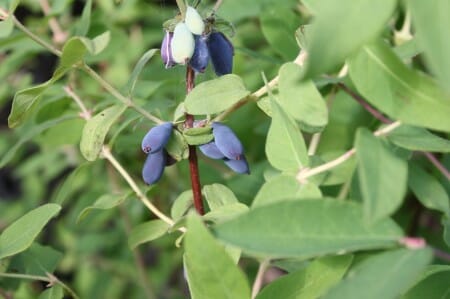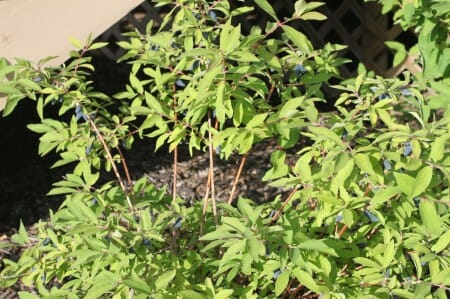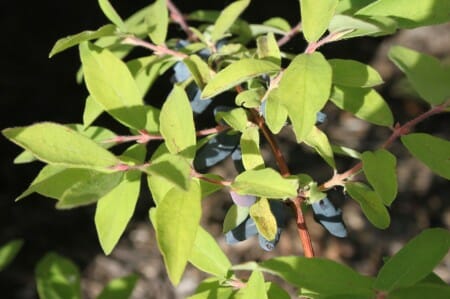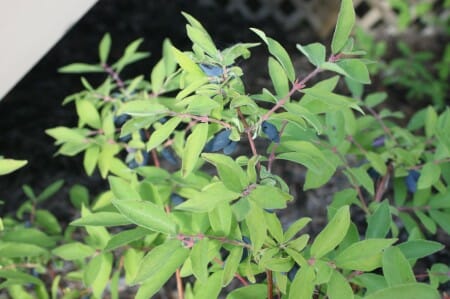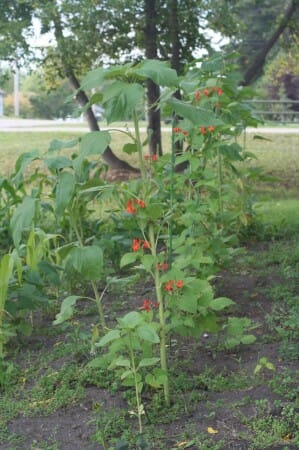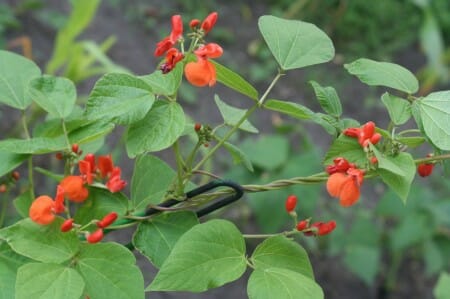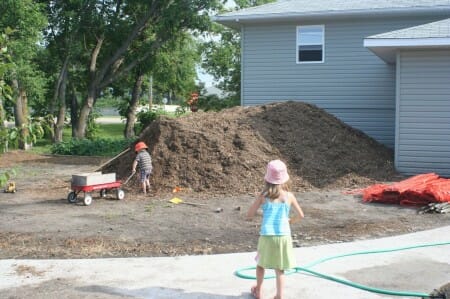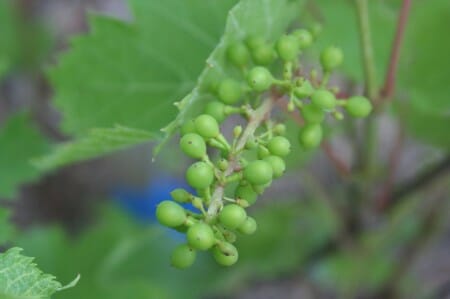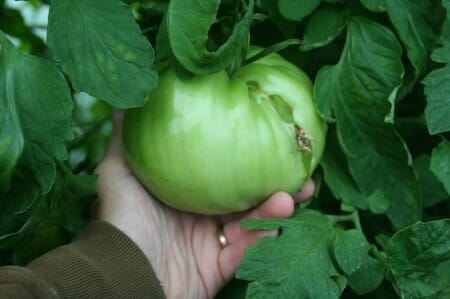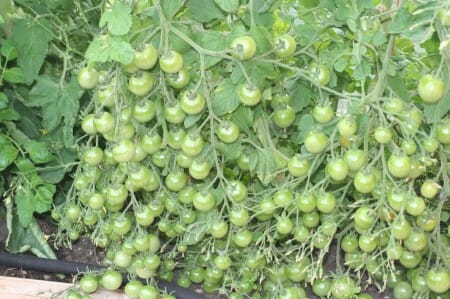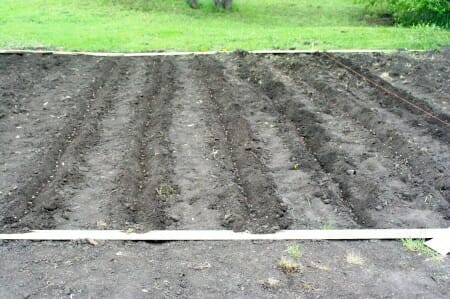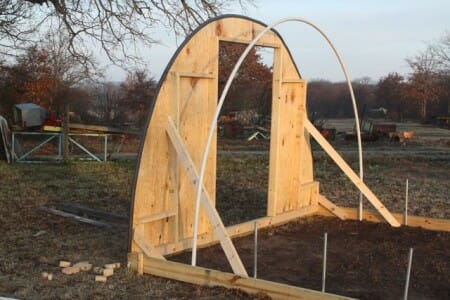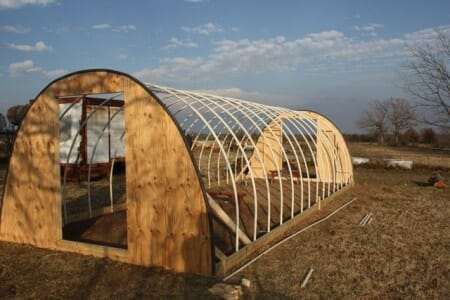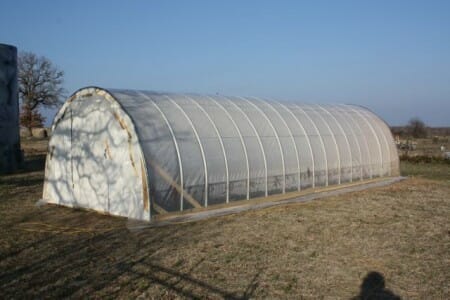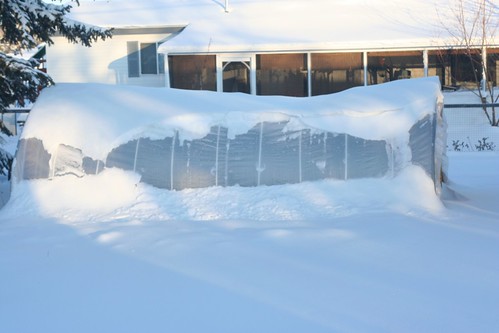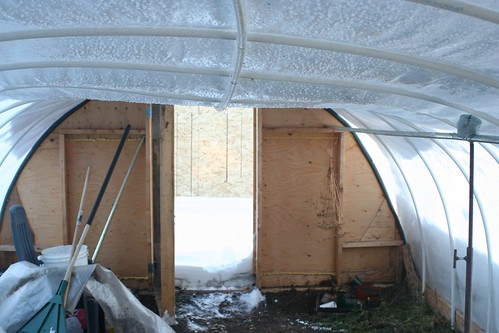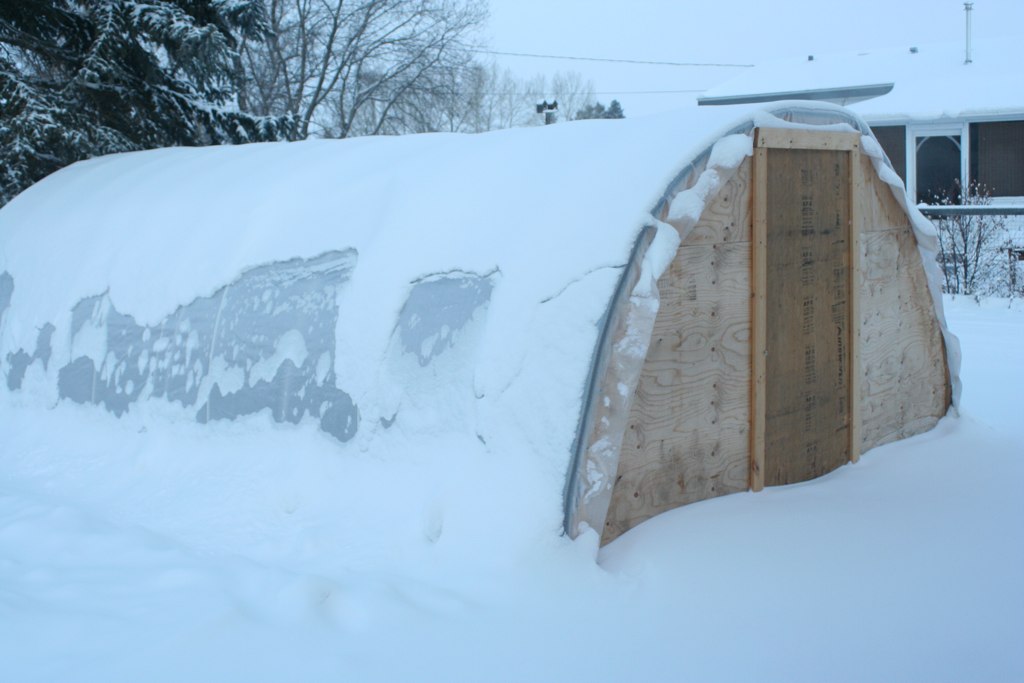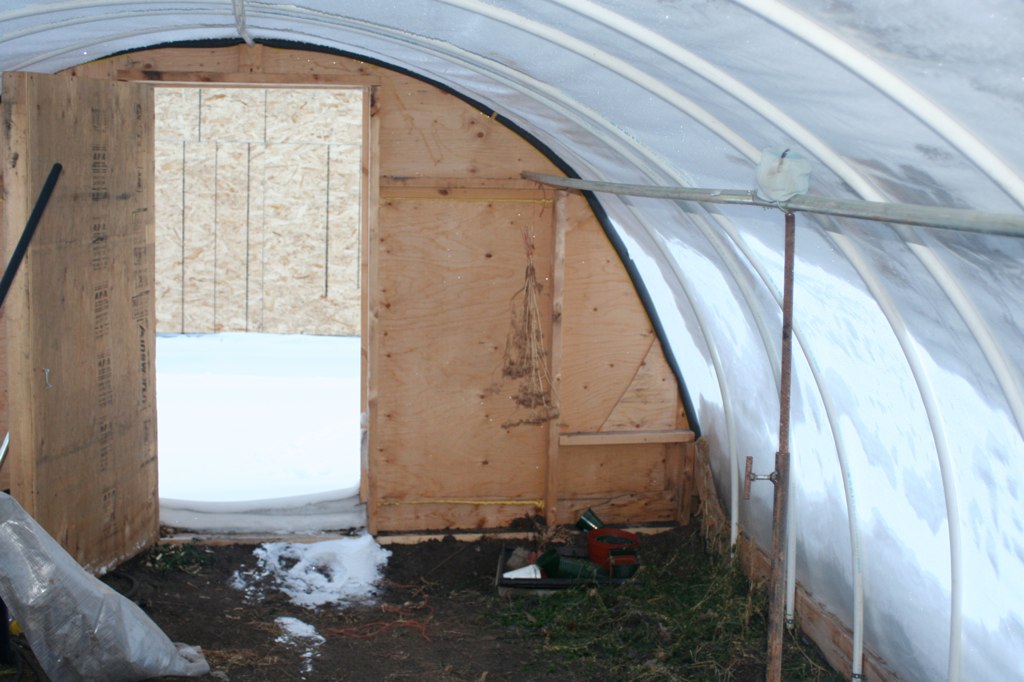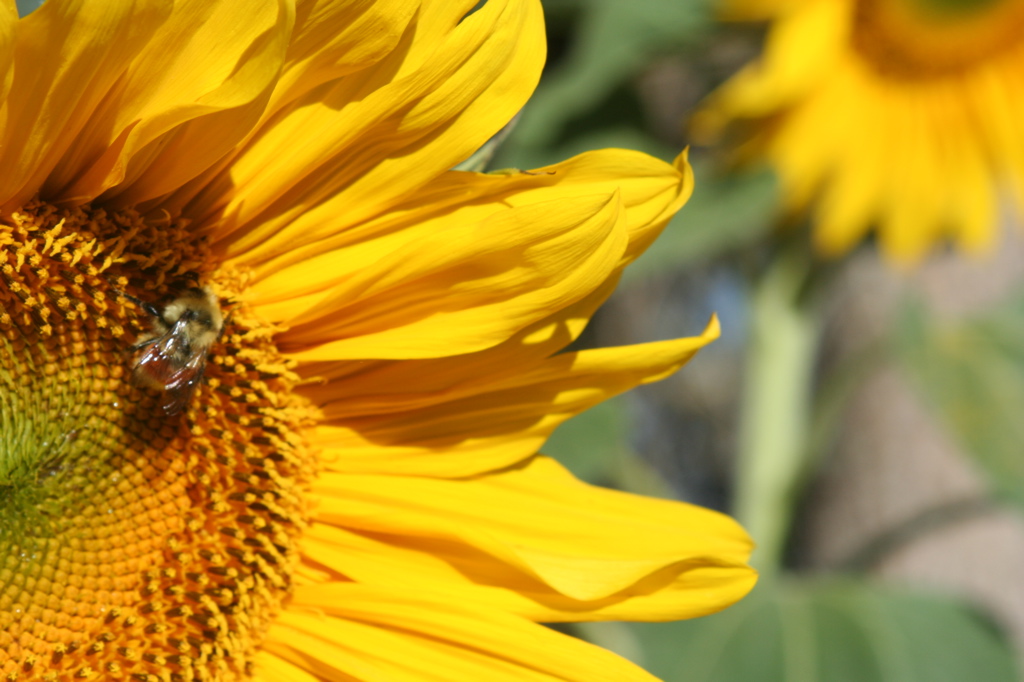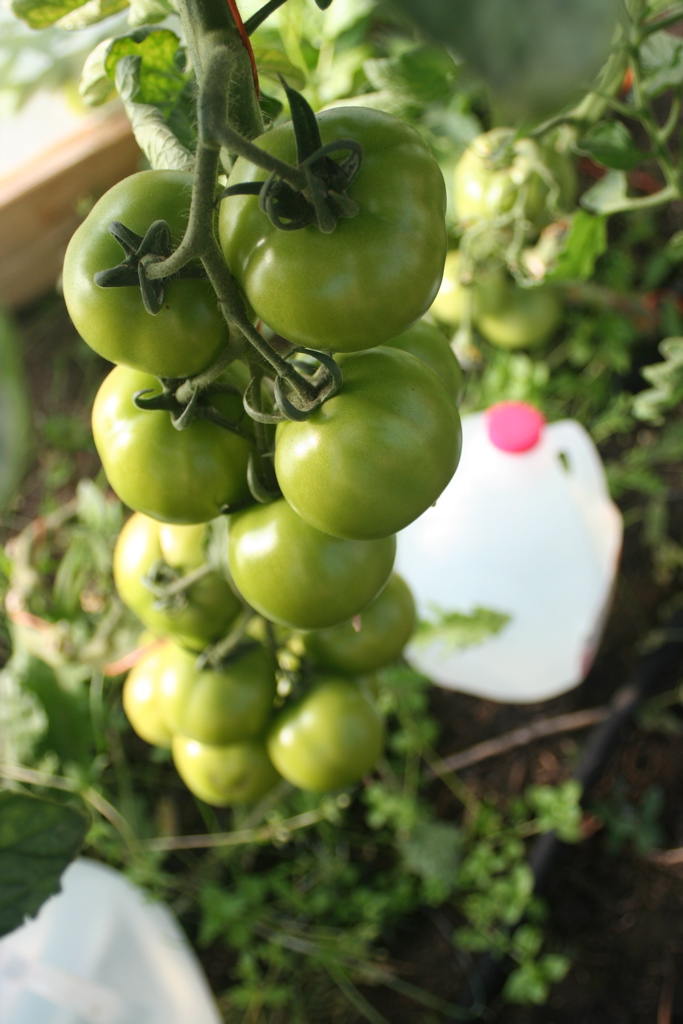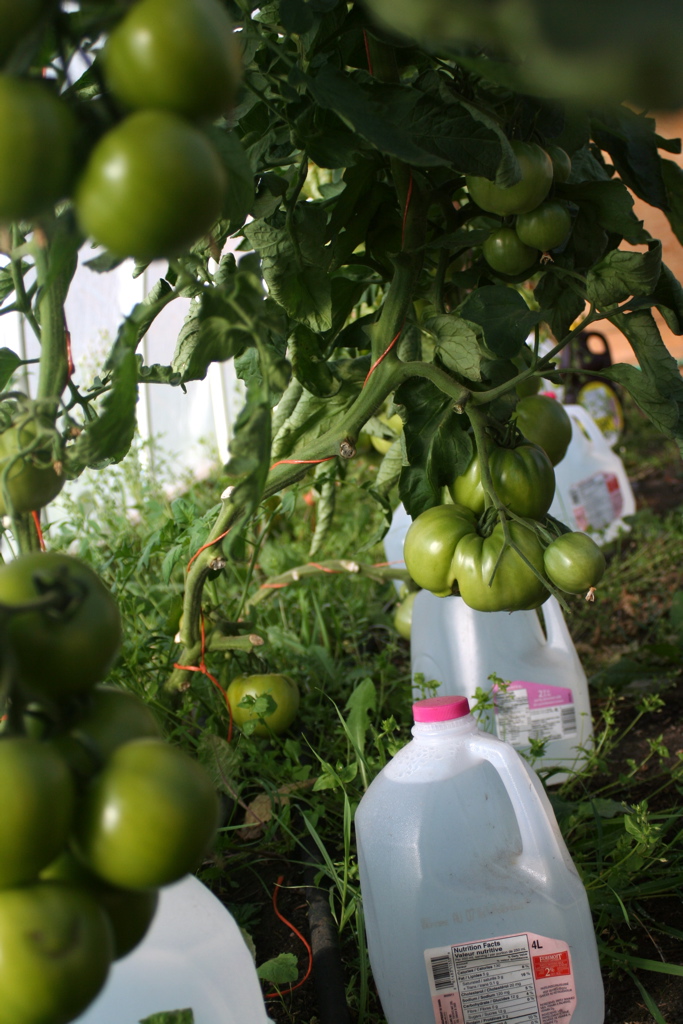I don’t know if you’ve picked up on this yet, but I like tomatoes. I’m pretty sure that, to date, they are my favorite thing to grow. This year I planted six varieties and I thought I’d share my thoughts on which ones I thought were best. (Not all tomatoes are created equal, you know.) So without further ado, may I present to you – The 2009 Tomato Awards!… Also known as Dave’s Favs for 2009… Or Tomatoes I like… Or whatever.
Starting at the top, my number one pick for tomatoes this year is…

#1. Sweet Cluster
I like to eat my tomatoes like apples and this is the perfect variety for doing just that. They are the perfect size – about the size of a lightbulb, but a very nice round shape. They also produce like mad! They produce in clusters (thus the name) of about six or more tomatoes. These are hands down my favorite tomato of 2009.
#2. Sweet 100
Now this ranking may be a little skewed. I love cherry tomatoes and this was the only variety that I planted this year – so it automatically makes it into the top by default. The flavor was good, but I think I have had better cherry tomatoes (just not this year). I do have to say I was impress with their production though – lots of long trailing clusters.
#3. Lemon Boy
I do have a thing for the slightly unusual when it comes to gardening, so yellow tomatoes certainly have an attraction for me. But I do really like the flavor and texture of the lemon boy tomatoes. This is one that I’ll be planting on a regular basis in years to come.
The Others
The rest of these were fine and good. All of them were quite edible, but they weren’t anything really special. They were “just tomatoes”. So in no particular order…
Brandywine – There were kinda fun because they grow very large. I sliced one up for lunch and I hardly had room on my plate for anything else. This is what you want to grow if you want to out-grow your neighbor.
Beefmaster – Mine were pretty ugly looking. Quite bulgy, like someone was trying to fit two tomatoes into one skin. Still tastes good though. Can’t tell its shape when you turn it into salsa…
Better Boy – This is your all-round average, all-purpose tomato. It’s nice. It’s good. Not much else to say about it.
So that’s my tomatoes of 2009. I’m ready to start planning for 2010, so if you’ve got some favorites that you’re willing to share – leave a comment!
